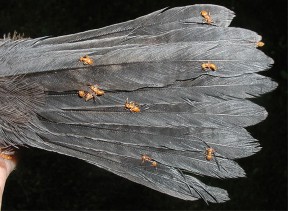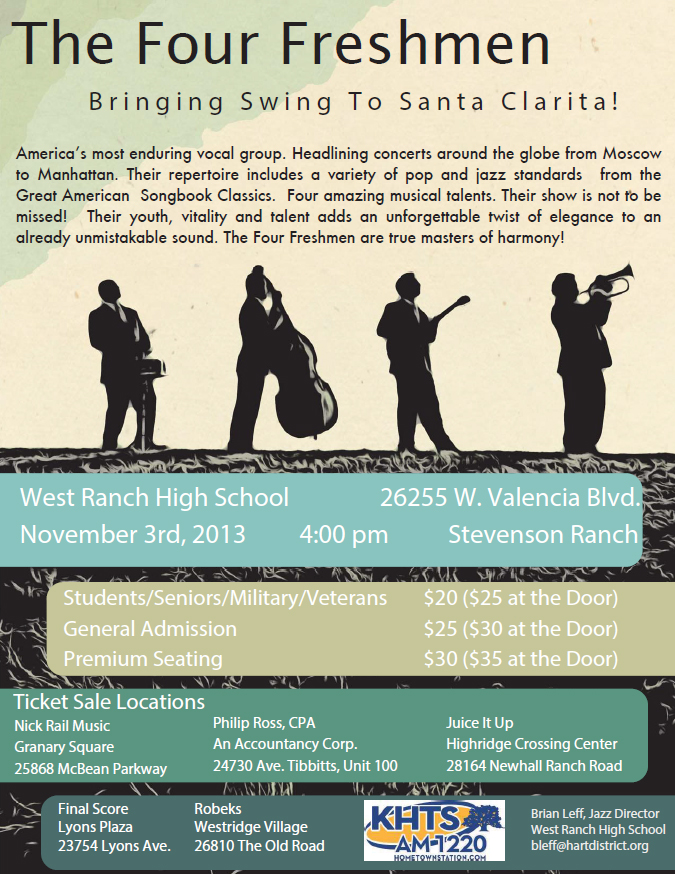 Fall has started. I know it is hard to notice in Southern California, but even if the days are still warm, you might have to put a blanket on your bed because the nights are much colder.
Fall has started. I know it is hard to notice in Southern California, but even if the days are still warm, you might have to put a blanket on your bed because the nights are much colder.
It’s time to get back in the habit of refilling your bird feeders with seeds. In the summertime, the food supply is plentiful, but the cold weather is just around the corner.
These early fall weeks are when you can observe migratory birds in your backyard, birds you might catch on their way down south where they will spend the winter. They are glad to have some extra food to fuel their migration.
Remember that if we have frost in Santa Clarita valley, it is often during the weeks around Christmas, not in January or February when hopefully we will get some rain – and again, with cold weather the birds welcome extra energy they can get without too much effort. Then as spring comes, you can enjoy unusual visitors only for a short period at the end of April and May, as those same birds you saw in the fall make their way back north. Remember, any time of the year, if there is food, water and shelter, they will come.
 So as the weather cools down, wash your bird feeder, fill it up and keep watching. If you have many squirrels, carefully choose both your feeder and the location you will place it. Sometimes, having it on top of a post is the only answer. If you cannot find something in your local stores to foil those squirrels, there are many sites on the internet that address the “squirrel problem.”
So as the weather cools down, wash your bird feeder, fill it up and keep watching. If you have many squirrels, carefully choose both your feeder and the location you will place it. Sometimes, having it on top of a post is the only answer. If you cannot find something in your local stores to foil those squirrels, there are many sites on the internet that address the “squirrel problem.”
In our warm climate, I have found that having a bird bath is a delightful way to attract birds to my backyard and to have many interesting visitors.
I was really excited to see a gorgeous red bird in my bird bath recently. It was my first summer tanager, a sight I won’t soon forget. If you know the red cardinal that you see on many Christmas cards, imagine the same vivid red – that is something you notice!
Birds bathe with such happiness and delight, it is a joy to see. What fun to watch 15 cedar waxwings piling up like crazy in the bird bath and sounding like school children. Or a hawk, checking over its shoulder all the time, but finally sitting with obvious relief in the water – that is a pleasure to observe.
A bird bath should not be too deep, with some flat area on the side so the birds can drink. If yours is too deep, add some medium-sized stones on the bottom so they have a stable resting platform. It should be clean and filled up all the time. That is not too hard to do if you put it in a place reached by your sprinklers and you hose it off regularly.
For birds, being clean is important for their survival. Feathers are their protection from heat and cold, as well as allowing them to fly away quickly in case of danger. If their feathers are dirty, they won’t do their job, and this is why you can observe birds spending many hours preening themselves.
 How do they do that? They slide each feather through their beak, removing any dirt or parasites they can find. Then they realign their feathers in the best position, the same way we comb our hair. They also distribute the oil found in the uripydial gland at the base of the tail to waterproof their feathers.
How do they do that? They slide each feather through their beak, removing any dirt or parasites they can find. Then they realign their feathers in the best position, the same way we comb our hair. They also distribute the oil found in the uripydial gland at the base of the tail to waterproof their feathers.
Some birds do not have this gland, including owls, pigeons, parrots and hawks. They have special feathers that disintegrate into a powder that replaces the preening oil.
How do birds take baths? That seems an easy answer: They go in the water, fluff up their feathers while being very careful not to become prey at this vulnerable stage, then they shake their feathers and take off.
What about dust bathing? Hundreds of bird species have been observed taking regular dust baths, including the sparrow, California quail, ring necked pheasant, grouse, wild turkey, greater roadrunner; some species of kestrel will take regular dust baths. They are also part of plumage maintenance. The birds get close to the ground and vigorously wriggle their bodies and flap their wings. That makes a little indentation in the loose soil; the birds then spread both wings so the material falls between the feathers and reaches the skin. They also rub their head in the soil.
The dust bath is followed by shaking the body, ruffling the feathers and careful preening. The dust helps to dislodge parasites and absorb the preening oil that was previously on the feathers so a new coat can be carefully applied.
What else? Sunning helps birds control body parasites and feather mites by moving these pests to different parts of the body where they can be nibbled away.
Any other techniques?

Anting
Yes, but I am going on my tippy toes about this one because the scientists are still baffled by it and cannot quite decide why it is done. The birds do it, so it certainly has a purpose, but the humans are still scratching their heads. That interesting habit is called “anting.”
What is anting? More than 250 species of birds have been known to ant. They rub insects on their feathers, usually ants. The current thought is that the birds understand that the fluid in the ants is useful – and we know it contains formic acid. Some scientific experiments have been done where the formic acid was removed from the ants and the birds would not ant.
Formic acid is an insecticide, a fungicide and after using the acid on their feathers, the birds have the added bonus to be able to eat the ants. Some birds have also used millipedes or puss moth caterpillars, and those are also known to release powerful chemicals.
 Some birds will sit on an ant hill and let the ants crawl all over their body, hoping the formic acid produced by the ants will eliminate the parasites in their feathers.
Some birds will sit on an ant hill and let the ants crawl all over their body, hoping the formic acid produced by the ants will eliminate the parasites in their feathers.
Somehow, I think we humans have it a little bit easier by taking a shower, scrubbing our body with soap and washing our hair with shampoo. But keeping clean is not only a matter of aesthetics. I remember learning that our local native Americans, the Tataviam, were bathing on a regular basis and washing their hair with saponic plants to make sure they would be free of parasites. However, when they were moved to the missions where water was scarce and the idea of “modesty” was introduced to them, bathing was not possible and epidemics ravaged the population.
Birds found many answers for keeping clean using water, dust and ants. Survival is an important force to make you creative.
Remember to help out our local and migratory birds by putting out your feeders and filling your bird bath.
Evelyne Vandersande has been a docent at the Placerita Canyon Nature Center for 27 years. She lives in Newhall.






































